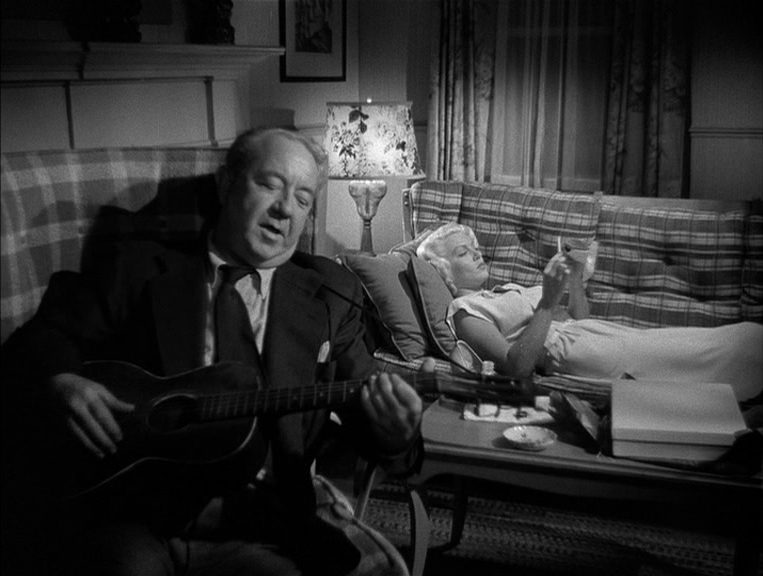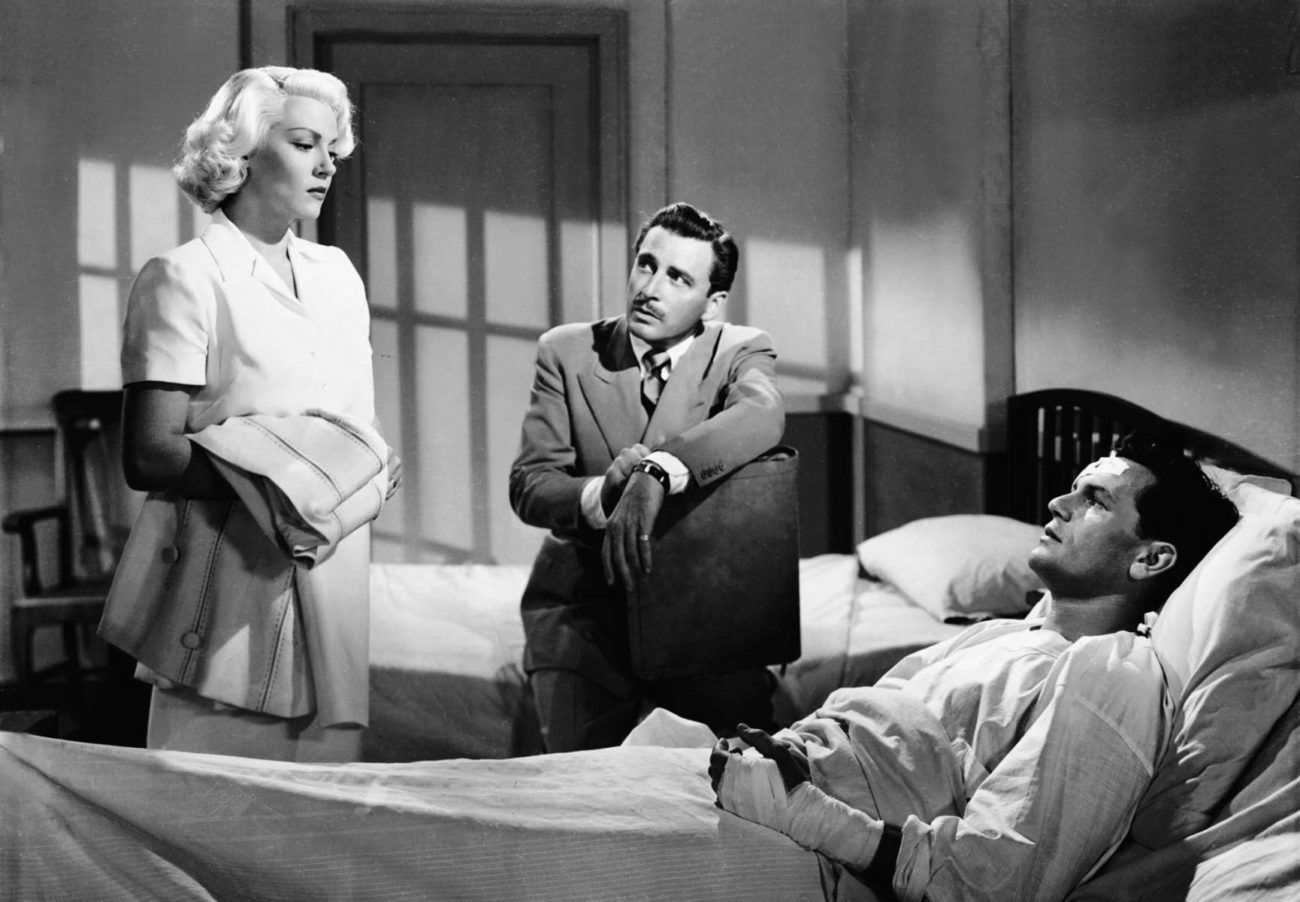A quiet strength defines Lana Turner as the quintessential femme fatale of the 1940s. Her performance at once inhabits, defines, and breaks the stereotype — generating a nuanced interpretation that continues to resonate to this day. In the aftermath of WWII, soldiers returned home to that find a rising generation of working women. The emergence of the femme fatale archetype reflects their burgeoning anxieties surrounding female sexuality and, more generally, female autonomy — in the bedroom, in the workplace, and in the world. Yet Lana Turner’s performance in the 1946 classic, ‘The Postman Always Rings Twice,’ offers far more depth than that of a simple villain-slash-sex-object. Beyond noir tendencies to position her character, Cora, within Hollywood notions of death and desire, Lana’s shifting portrayal of “hyper” femininity throughout the film reveals a hidden psychology that is nothing if not multidimensional.
That, of course, does not mean she is exempt from the conventions of cinematography as stand-in for the male gaze. In the film’s initial scenes, 13 fragmented shots split Cora into parts, as the camera sways fetishistically over her body. The scene begins with a shot of red lipstick rolling near the protagonist’s (John Garfield) feet — followed by a brief image of the lipstick owner herself as she gestures for him to return the item. The frame then pans up Cora’s body, revealing, in turn, her shoes, her ankles, and finally her legs up to the knee. The camera glances away before returning to look at her again. A tight close-up reveals Cora’s face in all its allure — an allure that largely contributes to the events about to unravel.

While the story of both the novel and the film are depicted through the male perspective, Cora is ultimately the plot’s engine. She manipulates Frank time and time again throughout the course of the story, nudging him in one way or another toward the film’s ultimate conclusion. In stark contrast to Cora’s shadowy machinations, costume designer Irene Lentz Gibbons designed an almost all-white wardrobe for Lana. With an iconic ensemble composed of a white turban, white top, white shorts, paired with white peep-toe pumps, she is a complete angelic vision. At once heavenly and sexually charged, these images of Cora, the character, and Lana Turner, herself, collide and collapse into one another, evoking a sense of duplicity while offering a window into women’s sexuality and burgeoning sense of independence in the late 1940s.
Cora is simultaneously an entrenched stereotype and a sympathetic figure. Though Lana’s character conforms to the convention of cinematic seductress, she is ultimately beyond definition. Far removed from the siren we are initially introduced to, she reveals a sense of ambivalence as the narrative unfolds. When Frank makes advances on Cora, for instance, she tries to get her husband to pay attention to her — as though she is desperately trying to remind herself that there is love between them. It’s difficult not to feel a certain amount of empathy when we see how trapped Cora is in her marriage with Nick, without any recourse or escape. Like any good morality play, it’s only in Cora’s worst moments, after she has helped murder her husband, that she suddenly appears in black — presumably mourning for both Nick and the loss of her own innocence.
Though Cora propels the narrative forward, this is ultimately a man’s world, and so, naturally, she is doomed from the start. Cora’s character is in many ways inextricable from male desire and the male imaginary. Her sense of agency and power is almost always relational. Cora married Nick because it meant a new beginning. She tells Frank they must kill Nick so they can have a new start of their own, and, later, believes that when she is pregnant, the baby will provide yet another do-over. Ultimately, Cora is trapped in a phantasmal cycle without self-fulfillment. But there is something tremendously human about that struggle. There are moments where you can tell that she is manipulating Frank, yet there are others where she seems genuine, and there is a great deal of blurring in-between. Cora is both. She is agent without agency, a seductress and an unfulfilled wife, a manipulator and a vulnerable woman all at once. Cora’s character, though sexist and simplistic in some aspects, reflects a crisis of identity that many American women were experiencing in the late 1940s — confronted with a new reality as the “winners” of a brutal war on two fronts. An entire generation, shellshocked and searching for meaning.



 " alt="">
" alt="">